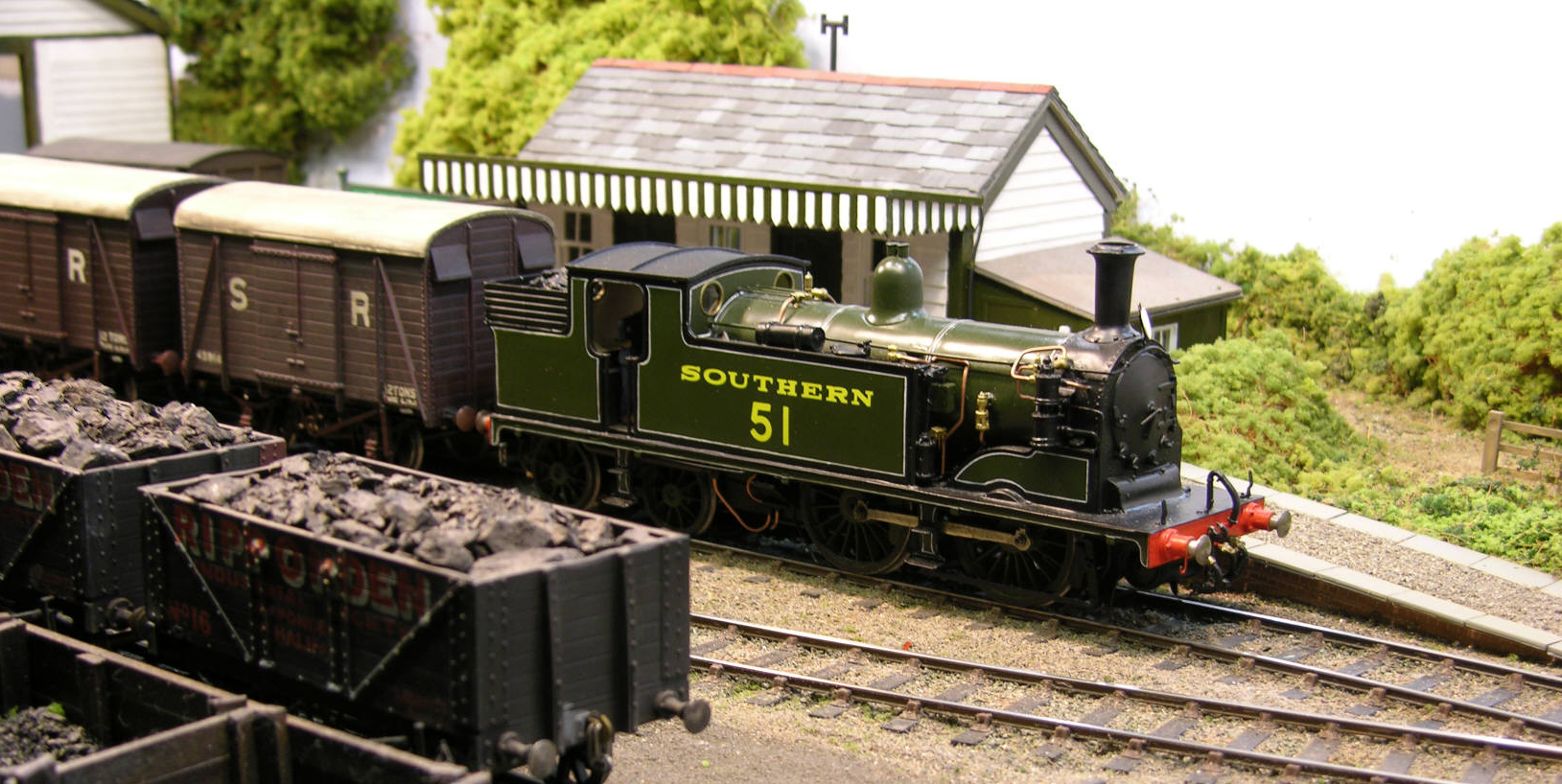 By Tony Dean, Maidenhead & Marlow MRC.
By Tony Dean, Maidenhead & Marlow MRC.
"
“A handbag line!” - Inspired by the playwright Oscar Wilde, a compressed version of the real track plan at Bembridge (IoW),
this little Colonel Stephens? style light railway terminus is set in the mid-Berkshire village of Binfield, sandwiched
between the towns of Bracknell and Wokingham.
The line to „Little Binfield?, the imaginary country estate of the fictitious family of Lady Bracknell and her
husband who built the railway, characters created by Oscar Wilde in his 1895 play “The Importance of Being Ernest”,
supposedly branches out from the northern end of the real SECR/LSWR junction station at Wokingham to run just a couple of miles to „Little Binfield?, on the NW edge of the real Binfield village.
As is common with light railways, it has an eclectic and somewhat haphazard collection of locos and stock. The characters depicted on the layout are those from the play, its creator, and real historic personalities of Binfield village in the late Victorian and Edwardian era, discovered from documents in Binfield local library. The layout is primarily designed to be run in the 1897-1914 period, but can also be adapted to depict more modern periods when desired.
"
|

